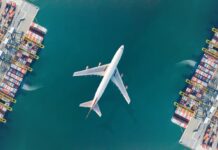

Telecommunications and IT equipment cargo often needs a fast, flexible and efficient transportation service as many shipments are to meet urgent customer needs.
However, it seems some shippers are not happy with the air cargo industry and the levels of service and attention they are getting across the supply chain.
Ericsson’s global service innovation manager, Gaspar Wosa tells Air Cargo Week he is “not happy at all” about how the industry looks after its customers: “The shipper is mostly disconnected from the events and the information loop back is both slow as well as not accurate.
“The lack of visibility and also the granularity of the track and trace and other real-time information is not good enough for making proactive and professional decisions.”
Wosa feels there is not enough emphasis placed on shippers’ within the supply chain and feels shippers are mostly not engaged in the process, but this may been changing.
He explains: “Due to lack of alternatives (in the past) the shipper has not been able to engage. Now with the existing technology this should change.”
For many firm’s needing to send just-in-time goods and urgent shipments, air cargo is the only transportation mode, but Wosa notes a number of issues with using air. “Cost – benefit – the price per kilogramme (kg) is not in proportion with the lead time and service level (visibility and standard deviation on service quality). This is one of the reasons for moving cargo from air to surface transport (rail, road and ocean),” Wosa says.
He feels many shippers simply would rather use seafreight or rail and road due to the cost versus the lead-time perspective.
For a company like Ericsson there are of course pitfalls and benefits of using different modes of transport for cargo. Wosa feels that cost is obviously the first to consider: “The lead times in rail and road has improved and a lot of investments is put in place to improve quality in regards to transparency.
“Ocean lead time is still long (with slow steam getting sometimes even worth), but predictability and cost per kg is in such a good ratio that it is worth using.”
The long lead-time for ocean does though carry a high inventory carry cost and he says many companies such as Ericsson have adjusted the total supply chain and are planning to incorporate these facts. “At a certain point there is a threshhold where it is not optimal to put more goods on surface. As cost benefit for airfreight is so poor the acceptance to put goods on surface transport is high,” he adds.
Ericsson moves 20 per cent of its shipments by air cargo, which are usually shipments of custom made telecommunications and IT equipment where there is unbalanced demand and to meet supply situations for different reasons.
The value of air cargo to Ericsson though is very high, Wosa says as products are high value per kg: “We would like to increase this if the cost – benefit ratio would improve. We will always have to use airfreight due to “go-to-market” situations as well as specific customer requirements. The issue is more related to the benefit rather than on the cost per kg.”
In order to improve the supply chain for shippers and the industry in general, he would like to see introduction of what he calls an “eco system” where different players in the supply chain of all transport modes can collaborate and exchange information.
This Wosa says would make it easy to connect, store information, create and manage documents, get pre-advice and escalation (exception handling), provide online real-time visibility E2E. He adds: “It should be an open architecture/environment that also is able to host future innovative applications and facilitate trade in order to optimise lanes removing overcapacity and inefficiency.”
As everyone knows, the air cargo industry’s adoption of technology and e-freight has been too slow and has left it trailing behind other modes of transport.
Wosa agrees it has not been as it should have been, but on a positive note he thinks that the shippers voice is getting through now: “The industry is now feeling the urgency to go for a change and improve according to need. Not only for the shippers sake, but for all stakeholders in the sector as well as for the competitiveness of the airfreight industry.”
As for the future of shippers using air cargo, Wosa says it will be vital in logistics E2E multimodal logistics vision and product life cycle and go to market models are pushing for airfreight while e-commerce and other omni-logistics related trends will also require airfreight services in the future.
He concludes improvements must be made in the air cargo supply chain with the shipper in mind, adding: “We are at a junction where certain strategic decisions must be made to improve the attractiveness and the competitiveness of the industry.”













